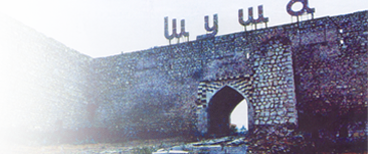
Today marks the 22nd anniversary of the occupation of Azerbaijan’s Fuzuli and Jabrayil districts by the armed forces of Armenia.
On August 23, 1993, some 51 villages and the center of the Fuzuli district were seized by Armenians, as a result of which over 55,000 residents left their native land.
The district covers a territory stretching from the southeastern slopes of the Karabakh mountain range to the Araz River. It has borders with Azerbaijani districts of Khojavand, Jabrayil, Aghjabadi, Beylagan, as well as Iran along the Araz River.
The area of the Fuzuli district is 1,386 sq. km. Some 13 settlements and 20 villages are located in this district’s territory freed from the occupation.
Twelve of the settlements, constructed after liberation, accommodate the internally displaced families.
Since 1988, the Fuzuli district has faced constant Armenian attacks. As a result of the occupation, over 1,100 residents of Fuzuli became martyrs, 113 were taken hostages and 1,450 were left disabled.
Azerbaijani Ecology and Natural Resources Ministry’s Operative Center, which inspects the devastating impact of the occupation on environmental and natural resources of Azerbaijan, found out that Armenians destroyed natural resources in the Fuzuli district during the occupation period.
Armenians cut down virtually all the trees in the Dovlatyarli village, and destroyed green spaces along the roads in the Gochahmadli and Yaglivand villages.
After the occupation of the Jabrayil district, which has a territory of 1,050 sq. km, some 72 secondary schools, eight hospitals, five mosques, two museums, 129 historical monuments and 149 cultural centres were left in the occupation zone.
Some 61,100 IDPs from the Jabrayil district were settled in over 2,000 settlements in 58 districts across Azerbaijan.
/Trend/




